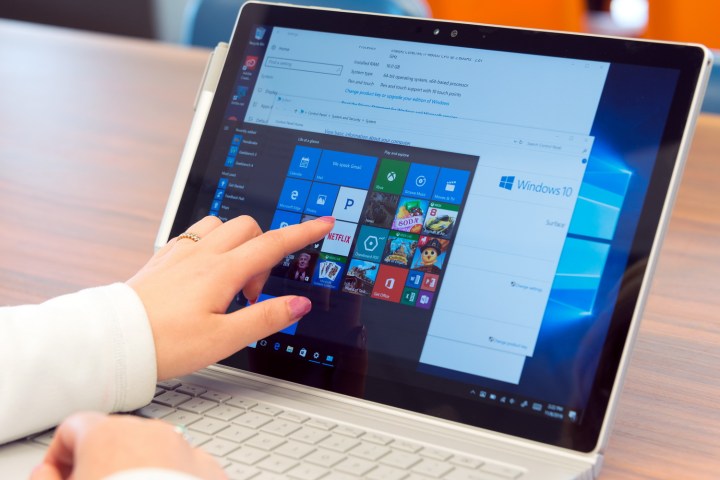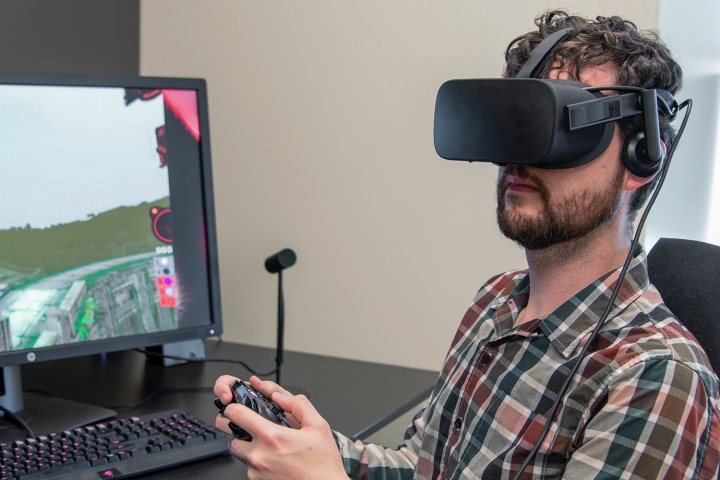
PCs started to think for themselves
Artificial intelligence has taken on significant real-world importance in everyday computing, after spending decades as a darling of science fiction, and relegated to researchers running experiments on massively parallel systems. And indeed, “strong AI” – a machine that’s as intelligent as a human – remains a goal for far in the future.
But there’s a different kind of AI that’s becoming real today, called practical AI. Companies are integrating it into our PCs and other devices by way of personal digital assistants, bots, and learning algorithms. You can debate whether this is “real AI” or merely advanced machine learning, but the fact remains that practical AI is having a real impact on our lives.
Apple’s Siri started things off on iOS in 2011, Google Now followed on Android a year later, and Microsoft completed the triumvirate with Cortana on Windows Phone 8.1 in 2014. It was only in 2016 that the personal digital assistant became a PC phenomenon, however. Apple pushed Siri to macOS Sierra to catch up with Cortana, which has run on Windows 10 from the beginning, and Cortana made her own strides in functionality.
Practical AI is starting to have a real impact on our lives.
While personal digital assistants are mostly limited to answering questions and processing computing instructions (setting reminders and running apps and so on), they continue to expand with new skills that are often server-side, and so simply show up to users as new functionality. Those skills can come from the companies themselves or from third parties.
For example, Microsoft has been particularly aggressive in expanding Cortana’s skillset, tying her into Microsoft properties through moves like adding AI-powered functionality to Office 365. It also recently announced a beta of the Calendar.help appointment-setting service, which can coordinate meetings among multiple attendees without any user interaction.
There’s talk of practical AI representing the future of computing, and becoming a new computing platform. That topic is open for debate. But more than anything, what 2016 accomplished for practical AI was to start making us comfortable with its presence in our lives.
Virtual and augmented reality became…reality
Virtual reality (VR) and augmented reality (AR) continued to make headway in 2016, moving from the drawing board to shipping systems for a host of applications. In VR, Oculus Rift and HTC Vive led the way, releasing PC-based VR gaming systems at relatively affordable prices. Sony also shipped a PlayStation VR system that works with the PS4, and Microsoft described a host of low-cost VR and AR headsets for 2017, alongside the next version of Windows 10, the Creators Update.
In AR, Microsoft was the most visible leader with its HoloLens system. HoloLens is expensive and not yet a consumer product, but it pushed AR into the general consciousness in a way that smartphone-based AR software never could. Windows Holographic makes adding AR to applications relatively easy for Windows 10 developers, meaning that by the time a consumer-level HoloLens from one of Microsoft’s partners makes it to market, a host of applications should be ready — and developers will have tools built to code even more.
HoloLens isn’t Microsoft’s only effort in this space. Its joint project with Intel will bring a range of mixed reality – that is, a combination of VR and AR – head-mounted devices (HMDs) in 2017. As mentioned above, devices were announced at Microsoft’s Creators Update event and will start at $300 with lower PC performance requirements than VR gaming systems, opening up mixed reality to a wider audience.
Gaming became less isolated
Gaming is becoming a social affair that’s not tied to a single device or platform. Multi-player has been around forever, of course, but that’s not what I’m talking about. I’m talking about barriers between players. 2016 is the year cross-platform gaming – between consoles and PCs – became real, even if in limited form.
Microsoft’s introduction of Xbox Play Anywhere at its 2016 E3 Xbox event was the turning point. Not only can Xbox Play Anywhere games run on both Xbox and Windows 10 but game saves, game add-ons, and achievements carry across systems. You can buy the game once on either a Windows 10 PC or an Xbox One and it’s available to you on either platform.
Almost every Windows PC builder made a handful of excellent PCs in 2016.
2016 was also a banner year for esports, competitive gaming events with professional gamers and large cash prizes. While esports are nothing new, 2016 marked a sort of turning point where people began taking esports seriously. Signs of this transition are numerous: ESPN created a site dedicated to competitive gaming, and Activision Blizzard partnered with Facebook to expand its Major League Gaming (MLG.TV) streaming platform. While esports might not be a 2016-specific phenomenon, it was an important part of gaming this year.
At the same time, it’s not just massive, organized, and professional competition that took off in 2016. Individual game broadcasting also gained new life this year. Twitch and other game streaming platforms have been growing in popularity, with Twitch alone enjoying 9.7 million daily active users engaging in over 2 million unique streams each month. Microsoft also entered the fray with its Game Broadcasting feature for Windows 10 and Xbox, announced as part of Creators Update, which will let gamers use Beam technology to broadcast games from both PCs and console to the Xbox community.
Gaming is no longer a solitary actively, even when playing games that are single-player. Streaming, online communities, and cross-platform play mean it’s easier than ever to enjoy a game with friends – or strangers.
In 2016, PCs continued to get better and better
Ever since Intel kicked off its Ultrabook initiative in 2011, Windows PC makers have designed and built better, thinner, lighter, and more robust PCs. In that respect, 2016 was a great year for anyone looking to purchase a new PC. Virtually every Windows PC builder made a handful of excellent PCs in 2016, many of them brand new models, representing an embarrassment of riches for anyone buying a new Windows machine.
Want an incredibly thin machine — and you’re willing to make some compromises in power and battery life? There’s the Acer Swift 7 if you’re looking for a standard notebook, and the Spin 7 if you want the thinnest Windows 10 2-in-1 available. If you want incredible gaming power in a relatively thin and light machine, then you’ll be interested in the Razer Blade gaming notebook, which packs quad-core processors and Nvidia GPUs into a remarkably slim chassis.
Mainstream Windows 10 notebooks and 2-in-1s also made advancements beyond being thinner than ever, with some of the best Windows machines ever produced making their way to the market in 2016. Headliners include HP’s 2016 Spectre x360 and Lenovo’s Yoga 910, which duke it out with awesome displays, excellent battery life, and solid performance.
Not surprisingly, 2016 also brought some innovative devices that don’t fit the mainstream but push the envelope in some interesting ways. There’s Microsoft’s Surface Studio, of course, and Lenovo’s Yoga Book, a tablet with a touch-only keyboard and precision writing surface.
In short, no matter what kind of PC you’re looking for, 2016 offered at least one or two good options. Although Apple might have disappointed some professional users with its MacBook Pro line, the Windows PC ecosystem is as exciting and dynamic as it’s ever been.
In the end, 2016 helped PCs turn the tide

PC sales have fallen for years, with analysts reporting that the growth of mobile and other factors have maintained the slide. In June 2016, for example, IDC reported four consecutive quarterly decreases, culminating in a 7.3-percent year-over-year decline.
More recently, however, things seem to be changing. IDC reported in November that the PC market could be stabilizing, with Windows 2-in-1s and other premium notebooks contributing higher sales. By 2020, the PC market could even begin to grow again, according to IDC’s data, which would be a boon to manufacturers and the companies that make PC software and accessories.
There are numerous reasons why the PC market has slumped, and just as many reasons why it might recover. Certainly, an increase in the quality of PCs, new capabilities via practical AI, an enhanced PC gaming experience, and new VR experiences will only help.
While many of 2016’s innovations were in their formative stages, the passing year was a good one for PCs, and provided plenty of reason to be excited about what comes next.
Editors' Recommendations
- Meet the Qualcomm chips powering Meta’s Quest 3 headset
- HDMI 2.1 could reinvent PC gaming, and all gaming laptops should have it
- Lenovo’s new all-in-one PC features a swiveling hinge for work-from-home comfort




